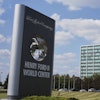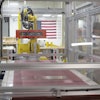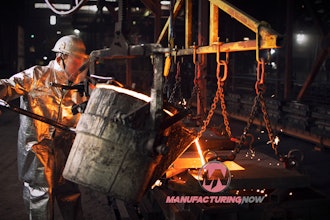ISM: Manufacturing Activity Barely Grows in August
Given all of the poor regional studies of late, many economists had expected the Institute for Supply Management (ISM) Purchasing Managers Index (PMI) to contract in August, falling below the threshold of 50 for the first time in two years. While the PMI did slow down, moving from 50.9 in July to 50.6 in August, overall manufacturing activity continues to grow, albeit barely. Just four months ago, PMI was over 60, indicating strong growth and illustrating how much the sector has weakened in such a short period of time.
Many of the measures of activity were mixed. Respondents stated that new orders and production contracted in August, while employment, inventories and trade volume grew. Note that even the measures indicating growth were doing so at a slower rate. This would include the indices for employment and exports, for instance. Pricing pressures also slowed down, with the index for prices down from 59.0 in July to 55.5 in August. Yet, this still suggests higher raw material prices – a serious challenge for many manufacturers.
Some of the sample responses are instructive ranging from talk of softening economic conditions domestically to stronger product demand overseas. An individual from the transportation and equipment sector wrote, “Current headwinds in the national and international economic environment have increased uncertainty, and are affecting our customers’ willingness to commit to high-dollar equipment purchases.” Indeed, another respondent noted that, while their company is doing well, “the situation seems tenuous.”
At the end of the day, it is important to keep in mind that the ISM survey – like many of the other regional studies that have come out in recent weeks – are measures of sentiment on the part of businesses. The comments in the preceding paragraph seem to bear this out.
While official statistics on production from the Federal Reserve and others seem to show slow growth in overall manufacturing activity, the surveys have tended to reflect a degree of pessimism not unlike their counterparts exploring the mood of consumers. This has provoked a lot of attention of late, particularly on how reliable a measure these surveys are for predicting industrial production.
While it is true that there seems to be some disconnect, the reality is that manufacturing activity has slowed considerably since the spring. The differences between the indicators are really over the scale of this slowdown (e.g., whether we are contracting or simply slowing down our growth).
What is troubling in all of these measures is the weakness of new orders, which does not bode well for future production. Again, this is simply the current sentiment, which could change, but it will be important for the health of the overall economy for us to have a more robust increase in new orders and production, which will in turn lift manufacturing employment.
Many of the regional surveys suggest higher optimism for the coming year, and we can hope that this comes to fruition.
Chad Moutray is chief economist, National Association of Manufacturers.


















